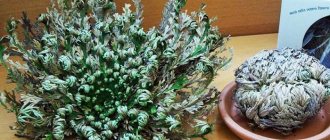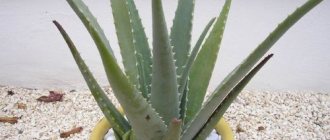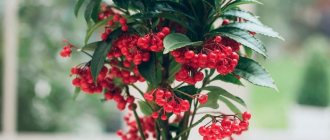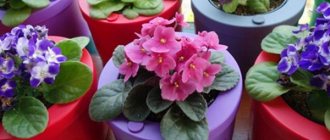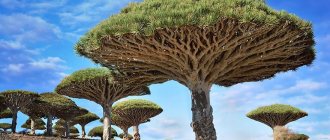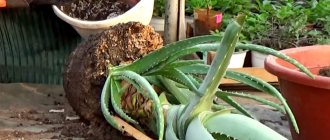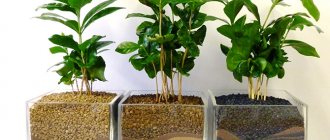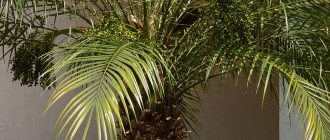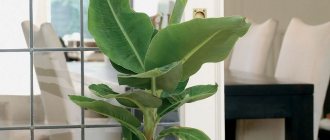Eucalyptus, in the minds of most people, is a huge tropical tree with amazing healing properties. And this is absolutely true, because in the wild they are real giants. They grow up to 150 meters in height and are capable of absorbing up to 300 liters of water in one day. But it turns out that a small eucalyptus tree can be grown in an ordinary city apartment. It, of course, will not become as large as in its natural habitat, but it will have the same healing properties.
Description and characteristics of the plant
Lemon eucalyptus (Eucalyptus Citriodora) is an amazing evergreen tree of the Myrtaceae family, which is considered to be native to Eastern Australia. Prefers to grow in warm climates. Under natural growing conditions it can reach 100 m in height. When kept indoors, the height of the plant can be easily adjusted with timely pruning and pinching. The leaves are quite dense, arranged in a spiral on the stems. They have an oval-lanceolate shape, reach 16 cm in length, and no more than 2 cm in width.
Indoor lemon eucalyptus
The bark of a eucalyptus tree is white with red-brown, sometimes orange, streaks. There are small growths at the bottom of the trunk.
Eucalyptus flower in a pot, Blue Baby variety
Types of indoor eucalyptus
On sale you can find 4 types of eucalyptus, each of which has unusual foliage and a spectacular appearance.
Eucalyptus cinerea, or silver dollar
This unusual bright tree is decorated with matte silver egg-shaped foliage. As they grow, the shape of the leaves remains virtually unchanged.
Eucalyptus globulus (Eucalyptus globulus)
The bush has a large number of branches, which are covered with rich green foliage of an elongated lanceolate shape. The bark of this species is pale yellow.
Eucalyptus gunnii (Eucalyptus gunnii)
The species has round light blue leaf blades that have a faint aroma. The leaves turn green only on a mature plant. There are several varieties with smaller foliage and dark green or deep blue color.
Varieties suitable for home cultivation
How to grow a lemon tree from a seed at home
There are many types of eucalyptus (more than 500), but only a few of them are suitable for growing as an ornamental crop. The most popular include:
- globular. It stands out for its beautiful, pyramidal crown and bluish-blue leaves, on the outside of which there is a silvery coating;
- Gunny. Young plants have round, gray-green leaves, which become oblong with a pointed tip as the tree matures;
- Blue baby. Belongs to the dwarf species of eucalyptus. Distinguished by small gray-blue petals;
- fig leaf. It stands out among other varieties due to its rounded small leaves;
- silver or ash. The main difference is the gray oval or round leaves;
- Populus is an ornamental eucalyptus that is capable of forming small berries.
Important! These varieties are not intended for planting in open ground; they can only be grown indoors.
There is also a very beautiful species, the rainbow eucalyptus, which has bark of various colors similar to a rainbow, but it is not suitable for growing as a houseplant.
Varieties of plants in pots on the windowsill
Features of eucalyptus
The natural shape of the crown of eucalyptus trees is pyramidal, and it has a light blue tint. This plant comes from Australia and is widely used to extract valuable essential oil. Eucalyptus is not widely used in home culture. This is due not only to the fact that the culture is quite expensive, but also to its demanding and capricious nature.
Eucalyptus (Eucalyptus) is a slow-growing plant, and it changes almost imperceptibly. At home, the height of the bush, as a rule, does not exceed 100 cm. It can be cultivated both as a tree and as a shrub. In indoor culture, this plant has graceful straight shoots that are decorated with silver-green leaf plates, the shape of which is similar to a coin.
It may seem that the eucalyptus crown is loose; this is due to the unusual arrangement of the leaf plates, which are turned edge-on to the light source. The shiny and smooth surface of the leaf blades is covered with a waxy coating of a bluish-gray hue, which has a spectacular silvery tint. The oval-rounded soft leaf blades have a pungent aroma. After some time, they become stiffer, and also lengthen a little and become slightly sharper.
The tree also stands out for its unusual flowering. Small flowers are formed in the leaf axils, which can be short-petiolate, single, or collected in not very large corymbose inflorescences. The petals of the flowers are fused, and they are decorated with many stamens. Fluffy flowers can be colored yellowish, pale cream or pale pink. In place of pollinated flowers, unusual cone-shaped fruits are formed.
Eucalyptus has powerful phytoncidal properties. In addition, the wonderful smell helps prevent the development of colds, and it also has a pronounced refreshing, tonic and sedative effect. This plant is great for offices and work areas.
We grow eucalyptus at home - Everything will be fine - Issue 97 - 12/17/2012 - Everything will be fine
Medicinal properties
Indoor eucalyptus releases phytoncides that cleanse the air of viruses and bacteria.
How to grow abutilon flower from seeds at home
The leaves contain essential oil that has powerful antibacterial and antiviral properties. The leaves of the plant are used to prepare oils, infusions and alcohol tinctures.
Eucalyptus is a home plant that is often used to treat abscesses, furunculosis, purulent mastitis and various ulcers. Decoctions of eucalyptus leaves can be used for inhalation for acute respiratory infections and gargling for throat diseases and various problems in the oral cavity.
Note! The plant will only be beneficial if you apply eucalyptus leaves and products prepared from them externally in the form of lotions, ointments or rinses. Ingestion may cause poisoning.
Bright green eucalyptus leaves
For your information! Eucalyptus was first grown in Australia at the end of the 18th century. The eucalyptus tree came to Russia thanks to the botanist A. N. Krasnov in the early 80s of the 19th century. It took breeders more than 50 years for it to take root.
Difficulties in the growing process
In the process of growing eucalyptus, almost every gardener may encounter certain problems. The main problems are: stretching of shoots, rather dull foliage color, significant reduction in plant size. All this can happen due to the fact that there is not enough light for eucalyptus to grow.
An equally common problem is wilting of foliage as a result of insufficient watering. The root system also requires a lot of attention and care.
Indoor lemon eucalyptus is a rather finicky plant, and if you really want to grow it, you must carefully study all the nuances and rules for caring for it.
author Volosnova Yu., photo Toptropicals.com
Lemon eucalyptus (Eucalyptus citriodora) is a heat-loving perennial plant native to eastern Australia. In nature, these are large trees, reaching 30 meters. And in indoor culture, you can adjust the height of the tree as you wish, using regular pruning and pinching.
The hard and bristly leaves on the shoots of lemon eucalyptus are arranged in a spiral pattern. The structure of the leaves is oblong-lanceolate, petiolate, up to 16 cm long and 1-2 cm wide.
This plant is famous for its indescribable smell. The aroma of lemon eucalyptus is similar to lemon, verbena, lemon balm and thyme, but stronger and more expressive. Australian Aborigines scrape and eat the top layer of its leaves. Koalas feed on eucalyptus leaves, and the slowness of these animals is attributed to the effects of essential oils contained in the leaves.
The color of the smooth bark of lemon eucalyptus ranges from whitish to red-brown. The trunk has growths at the base. White flowers of lemon eucalyptus are dioecious. They are collected in corymbose inflorescences, consisting of individual umbrellas of 3-5 flowers. In nature, eucalyptus flowers are pollinated by bees. Lemon eucalyptus does not bloom in pots.
Conditions for keeping lemon eucalyptus
Eucalyptus as a species has a very high adaptability. It took root and formed forests in the Mediterranean and the North Caucasus. Perhaps the selection of particularly resistant specimens will lead to the acclimatization of this plant in temperate latitudes. However, the unpretentiousness and hardiness of eucalyptus make it dangerous for local flora, which it can crowd out.
In natural conditions, lemon eucalyptus is undemanding to soil and drought-resistant. This fairly hardy plant can survive even slight frosts. In regions with cold winters, lemon eucalyptus is grown in open ground as an annual.
When choosing a suitable place for lemon eucalyptus in the house and garden, keep in mind that this is a light-loving plant, but it can also tolerate partial shade. Lemon eucalyptus grows well indoors in a bright winter garden, on east and west windows, near south-facing windows. If the shoots of the eucalyptus have become elongated, and the leaves have become smaller and lost their previous color, it means that the plant does not have enough light.
A pot of indoor eucalyptus can be placed in the garden for the summer. When placing eucalyptus on a balcony or open air in the warm season, you should gradually accustom it to bright light to avoid sunburn. If the plant is suddenly exposed to the sun after cloudy weather (or after being in a place with diffused light), it can burn the leaves.
Lemon eucalyptus prefers warm conditions during the growth period. From spring to autumn, its comfortable temperature is in the range of 24…26°C. Next, the plant begins to prepare for dormancy, so in the fall it is advisable to reduce the temperature to 16...17°C.
Eucalyptus loves moist air, but does not tolerate spraying. Therefore, it is better to provide the plant with increased air humidity by placing the pot on a tray with damp expanded clay, pebbles or peat.
It is advisable to provide the eucalyptus with a flow of fresh air indoors, but drafts should be avoided (especially in winter) - they are very harmful to the plant.
Lemon eucalyptus care
Water eucalyptus from spring to autumn abundantly, as the top layer of the substrate dries, with soft water at room temperature. In autumn, watering gradually decreases and becomes moderate. It is necessary to water lemon eucalyptus with caution to avoid rotting of the roots, but the soil should not be allowed to dry out - the plant can hardly tolerate such extremes. When there is no active growth, it is better to water lemon eucalyptus when the substrate dries to a depth of 1-4 cm.
From spring to autumn, growing eucalyptus is fed with complex mineral fertilizer every 2-3 weeks. During the dormant period, the plant is not fertilized.
Lemon eucalyptus in indoor cultivation requires annual spring pruning, which inhibits the growth in height and length of growing shoots. When the main trunk is pruned to a height of 50-100 cm, the eucalyptus then produces more and more shoots, forming a lush bush. To form a beautiful dense crown, it is recommended to pinch young shoots.
Transplantation of lemon eucalyptus at a young age is carried out annually. Older specimens are usually replanted after 2-3 years. The following composition can be used as a substrate for an adult plant: two parts turf soil, one part humus soil, one part peat, one part sand. Good drainage is required at the bottom of the pot. When replanting, do not bury the plant. It is necessary to compact the soil well in the new container and then water it abundantly.
When growing eucalyptus in a container for a long time, it may be necessary to trim the roots when replanting (similar to the bonsai technique). In this way, the woody plant is artificially limited in growth and its root system is adapted to the small volume of the container, since simple pruning of the branches may not be sufficient.
Eucalyptus propagation by seeds
Eucalyptus trees reproduce successfully by seeds. Eucalyptus seeds are small, about 1-2 mm in size. Sowing of seeds is carried out from February to June. For information: in some species of eucalyptus, seed germination is light-dependent, so they are not embedded in the soil.
It is better to sow lemon eucalyptus indoors in February-March or the very beginning of April. A substrate is prepared from turf soil and sand in equal parts. For sowing, pots with drainage holes are used.
Sowing lemon eucalyptus seeds is carried out 2-3 seeds per pot, to a depth of no more than 5 mm. It is better to cover pots with eucalyptus crops on top with cling film to maintain light moisture on the soil surface. If necessary, the soil should be moistened with a sprayer.
At a temperature of 20-25°C, lemon eucalyptus seedlings can appear in about a week. But keep in mind that sometimes germination of eucalyptus seeds takes up to 3 weeks or even 3 months.
Picking is carried out after the plants have a pair of true leaves. Eucalyptus seedlings are planted, 1 copy at a time, into pots with a diameter of 7 cm. Composition of the earthen mixture for young plants: turf - 1 part, humus - 1 part, sand - 1 part.
Lemon eucalyptus - favorite indoor plant
I bought lemon eucalyptus seeds last summer by accident, knowing nothing about its properties and requirements. My own rules for growing plants from seeds boil down to the short formula “stick it in the ground and water it.” So I just sowed 5 eucalyptus seeds from a purchased bag directly into a pot of Kalanchoe, and then forgot about them...
About a month later, I found only one small sprout next to the Kalanchoe and planted it separately, in ordinary soil for seedlings. This seedling grew quite quickly. And when it had already formed about five true leaves, when watering I accidentally touched the plant with my hand. And I was amazed by the amazing aroma from the leaves, which no perfume can compare with! Since then, lemon eucalyptus has become my favorite window plant.
My young eucalyptus was already about 30 cm in height, and then I noticed: the tips of some of its lower leaves began to dry out. Then I cut off a couple of these leaves. And so that their wonderful aroma would not disappear, I began, sitting at the computer, to knead small pieces of eucalyptus leaves with my fingers and inhale their smell...
Then it became clear to me why Australian koalas are so lazy, calm and peaceful
